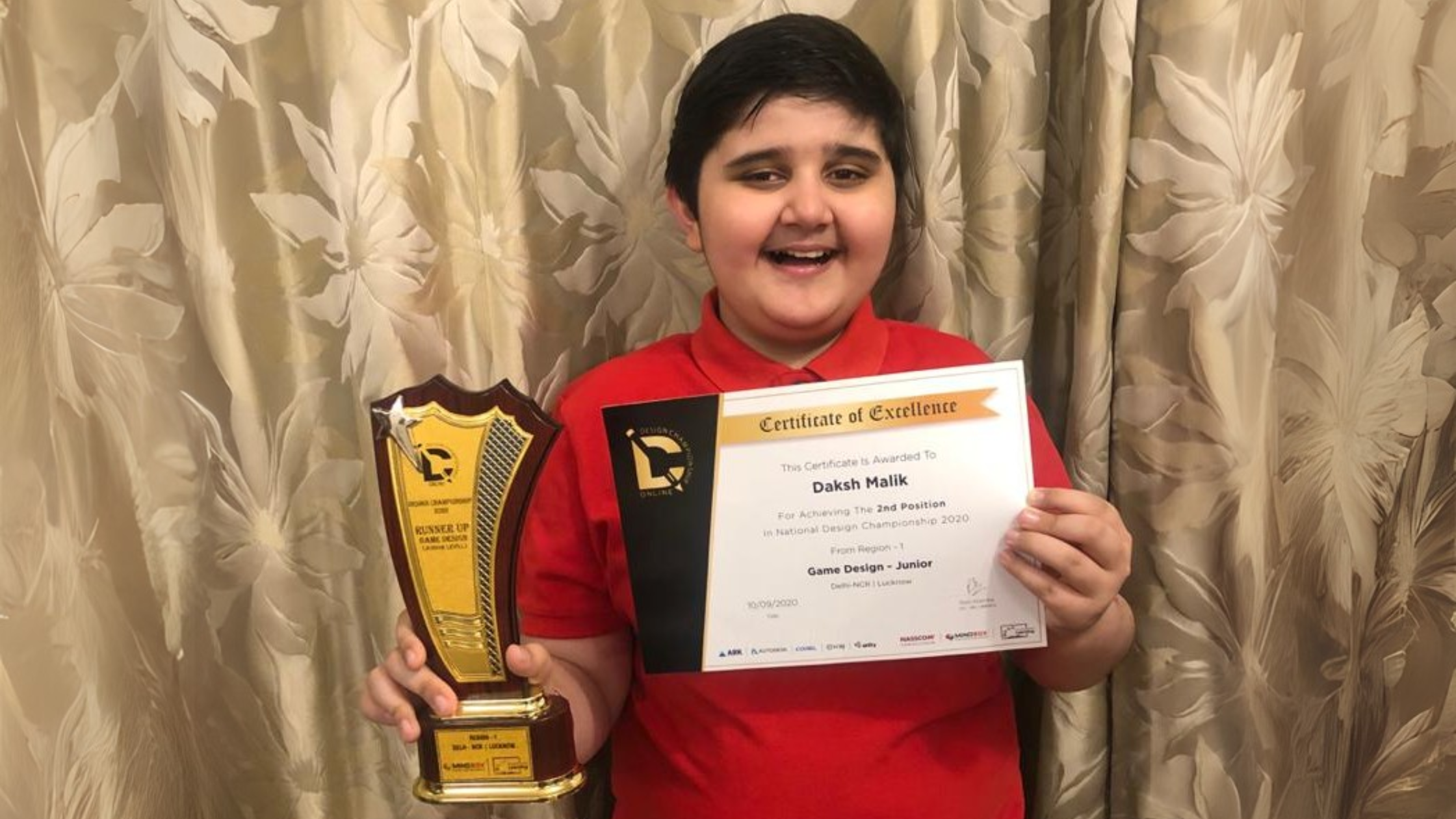14-Year-Old Noida Boy Discovers an Asteroid; NASA Lets Him Name It

In the quiet suburbs of Noida, India, a young teenager’s nightly gazes at the starlit sky have catapulted him into the limelight of the global scientific community. Daksh Malik, a 14-year-old student with a burgeoning passion for the cosmos, has not only participated in a NASA-led program but has emerged with a discovery that promises to put his name among the stars—quite literally.
This exceptional achievement, facilitated by the collaborative efforts of citizen scientists and esteemed space organizations, underscores a thrilling narrative of youthful curiosity, relentless dedication, and a remarkable journey into the depths of space science. As Daksh awaits the chance to leave his personal mark in the celestial catalog, his story offers a compelling glimpse into the powerful impact of nurturing scientific curiosity in young minds. What led to this discovery, and what does it entail for the future of amateur astronomy?
Early Beginnings and Inspiration
Daksh Malik’s astronomical journey began under the expansive, star-filled skies of Noida, where his childhood curiosity transformed into a serious pursuit of the cosmos. Introduced to the mysteries of space through his school’s astronomy club, Daksh learned to identify constellations, understand celestial movements, and appreciate the vastness of space. This initial exposure was more than just an extracurricular activity; it was a gateway to the universe, providing him with foundational knowledge that set the stage for his later achievements.
Recognizing his keen interest, Daksh’s school provided him with opportunities to deepen his engagement with astronomy. They facilitated his participation in advanced programs and provided resources that were otherwise not readily available. Beyond the educational support, Daksh’s family played a crucial role in nurturing his passion. His mother and grandfather, in particular, encouraged his fascination with space, supporting him emotionally and logistically to pursue his interests. Their belief in his potential and their constant encouragement helped him overcome the initial disappointments and challenges of space exploration.
This supportive backdrop was instrumental when Daksh encountered the International Asteroid Discovery Programme (IADP), a program that promised not just to educate but to offer real-world contributions by young astronomers to the field of space science. His decision to join was driven by a simple yet profound motivation—to discover something new and make a mark in the world of astronomy.
The Discovery Process
 Image source: Pexels
Image source: Pexels
Daksh Malik’s entry into the International Asteroid Discovery Programme (IADP) marked the beginning of an intricate and thrilling journey into space exploration. Through the IADP, Daksh gained access to advanced tools and a wealth of astronomical data, setting the stage for his eventual discovery. The programme, a collaborative effort involving NASA and the Pan-STARRS observatories in Hawaii, engages students in real scientific work by allowing them to analyze data collected from space.
Using specialized software called AstroMetrica, Daksh and his team embarked on the meticulous task of examining astronomical data for any signs of new celestial bodies. This software enabled them to sift through the vast datasets, isolating moving objects in the sky that could potentially be asteroids. The process required patience and precision, as the identification of genuine celestial objects among countless data points is both challenging and time-consuming.
Over a year and a half, Daksh and his schoolmates devoted countless hours to analyzing these data sets. Their perseverance paid off when one of Daksh’s detections, a previously uncharted object designated as 2023 OG40, was confirmed by NASA as a ‘Provisional Discovery of a Main Belt Asteroid’. This provisional status marked the first step towards official recognition and was a significant milestone in Daksh’s budding scientific career.
The discovery process was not just about the technical analysis of data but also about learning to navigate the complexities of space science. It taught Daksh and his peers about the rigorous verification processes necessary in astronomy, where findings must be meticulously confirmed and reconfirmed before they are accepted as part of the scientific body of knowledge.
The Role of Citizen Science in Astronomy
 Image source: Shutterstock
Image source: Shutterstock
Daksh Malik’s discovery of an asteroid through the International Asteroid Discovery Programme (IADP) exemplifies the critical role of citizen science in the field of astronomy. Citizen science involves the public in scientific research and discovery, often enabling amateurs to make significant contributions to scientific knowledge. This collaborative approach not only democratizes science, making it accessible to a broader audience but also enriches the field with fresh perspectives and expanded manpower.
In astronomy, citizen scientists like Daksh use advanced tools and data made available by professional observatories and space agencies. This collaboration allows them to participate in activities such as tracking asteroids, monitoring star brightness, or searching for exoplanets. These contributions are vital because the vastness of space makes it impossible for professional astronomers alone to monitor every potential celestial event or object. By engaging a global network of volunteers, astronomy projects can achieve much more, often at a fraction of the cost and time.
The success of citizen science projects in astronomy is evident in numerous discoveries and observations that have shaped our understanding of the universe. For instance, amateur astronomers have discovered comets, asteroid impacts, and even new planets. These discoveries are not only academically valuable but also crucial for practical reasons, such as assessing asteroid collision risks with Earth.
Moreover, programs like the IADP provide educational opportunities, inspiring students and adults alike to engage with science actively. They promote scientific literacy by teaching participants to use scientific tools, understand data, and contribute to genuine research. This hands-on experience is invaluable for inspiring future scientists and for fostering a scientifically informed public.
How to Get Involved in Asteroid Discovery Programs
 Image source: Pexels
Image source: Pexels
If you’re inspired by Daksh Malik’s journey, you can also contribute to asteroid discovery. Here’s how:
- Find a program – Look for established programs like the International Asteroid Discovery Program (IADP) or citizen science platforms like Zooniverse, which provide opportunities to analyze real astronomical data.
- Register and train – Sign up for your chosen program and complete any required training to learn how to use asteroid-tracking software and analyze telescope images effectively.
- Participate in observations – Join scheduled campaigns where you’ll examine images from telescopes, track moving objects, and collaborate with other participants to improve accuracy.
- Analyze and report findings – Use tools like AstroMetrica to identify potential asteroids, compare them against known objects, and submit valid discoveries for further verification by professional astronomers.
- Stay involved and learn – Follow space research updates, attend webinars, and engage with online communities to enhance your skills and contribute more effectively to ongoing asteroid studies.
Every participant plays a role in advancing space science, whether by discovering new asteroids or refining existing data. Your involvement could contribute to planetary defense and the understanding of our universe. Start exploring today
A New Horizon in Astronomy
Daksh Malik’s discovery is more than a personal achievement—it’s proof that young minds, when given the right opportunities, can contribute to real scientific progress. His journey from curiosity to discovery highlights the power of hands-on learning and the role of citizen science in expanding the frontiers of knowledge.
This is not just about one asteroid. It’s about the potential unlocked when passion meets opportunity. When education goes beyond the classroom and engages students in real-world challenges, it doesn’t just teach—it inspires.
Daksh’s story serves as a powerful reminder that the future of discovery lies in the hands of those willing to explore the unknown. With continued support for science education and citizen participation, the next generation of pioneers is already looking up, ready to chart new paths in the universe.
Featured Image Source: Shiv Nadar School Website
Loading...
Related Content
 When Science Shows Our Bones Can Rise Again
When Science Shows Our Bones Can Rise AgainBy Prince Ea





